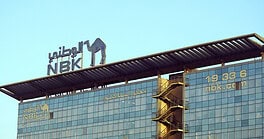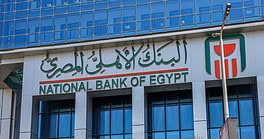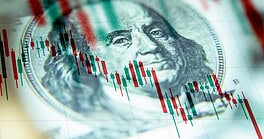Automated trading systems are helping fuel dramatic growth in the already-huge foreign exchange market.
![]()
The growth of the foreign exchange market over the past two decades has been astonishing by almost any measure. When the Bank for International Settlements, based in Basel, Switzerland, conducted its first central bank survey of global foreign exchange trading in April 1989, it estimated the markets daily turnover at $590 billion, making it the worlds biggest financial market by far. The latest triennial survey by the BIS in April 2004 put the volume of foreign exchange trading at $1.9 trillion daily.
Some market participants estimate that when the next central bank survey is done in April 2007, it could show the volume of trading has continued to grow to about $3 trillion daily. The foreign exchange market has become so liquid that if Chinas central bank were to dump its entire $1 trillion holdings of currency reserves on the market in a single day, it would account for only one-third of that days trading.
The real growth in the foreign exchange market has been in currency derivatives and swaps, says David Gilmore, economist and partner at Essex, Connecticut-based Foreign Exchange Analytics. Trading in the bread-and-butter spot currency market also has been enhanced by a massive accumulation of currency reserves by Asian central banks and OPEC [the Organization of the Petroleum Exporting Countries] and the blossoming retail currency market, he says. Anybody can go online and trade currency now with leverage of 100 times their security deposit.
Meanwhile, hedge funds have grown rapidly in recent years, and many of them specialize in currency speculation and tracking of market trends. The huge currency modeling funds have almost become price makers, as opposed to price takers, Gilmore says. Currency overlay managers use mathematical trading models to buy and sell currencies to make a profit.
The automation side of the business has exploded, creating jobs for people who create online trading platforms and who provide instant data processing, Gilmore says. But this has taken a toll on market makers at the banks and broker/dealers. The shift to electronic platforms means that less manpower is required, he says.
|
|
|
Chandler:Hedge funds are responsible for much of the recent trading growth. |
On June 21, 2006, CLS Bank International set a record for the value of payment instructions for currency transactions settled in one day: 381,872 payment instructions with a gross value of $5.35 trillion. The CLS Bank, which began operating four years ago to reduce systemic risk in the foreign exchange market, is one of many innovations that help keep the pipes wide and enable the market to smoothly handle the huge increase in trading volume, analysts say.
Basically, the CLS Bank operates on the theory that a stitch in time saves nine, says Marc Chandler, global head of currency strategy at Brown Brothers Harriman in New York. By settling payment instructions for foreign exchange transactions throughout the day, instead of once a day, there are fewer failed trades, and problems are discovered earlier. As with any system that concentrates liquidity, however, the CLS system creates its own risks, such as what could happen were the system to go down, Chandler says. A failure could trigger disruptions or transmit shocks throughout the global financial system.
By settling both legs of a foreign exchange transaction simultaneously, the CLS Bank eliminates the risk that one party doesnt pay up. This so-called Herstatt risk was named after a German bank that was closed by German regulators at the end of the day in Germany but only halfway through the trading day in New York on June 26, 1974, leaving the dollar side of its trades unpaid. CLS nets international payments in 15 major currencies so that participating banks make relatively small payments to settle their positions. It handles payment instructions for about 60% of foreign exchange transactions worldwide, and its market share is growing steadily.
The introduction of electronic broking systems and online trading platforms, which began gradually in the 1990s and now accounts for the majority of trading, has increased the efficiency and lowered the cost of trading foreign exchange, which has contributed to the entrance of new participants and bigger volume, according to Chandler. Since 2000, institutional investors have played an increasingly important role in the markets, and hedge funds have grown rapidly in size and number. Hedge funds and commodity trading advisers, or CTAs, account for much of the recent growth in foreign exchange trading, Chandler says. CTAs, who advise clients on the advisability of buying or selling commodity futures or option contracts, have become more active in the foreign exchange market.
|
|
|
Warms:Online trading has had a significant effect on overall activity. |
” The major currencies have become commodities, in effect, and they trade at very narrow spreads, Chandler says. Banks can make more money now on the smaller, more exotic currencies by making use of proprietary knowledge of where the orders [to buy and sell] are and trading at wider spreads than are common with the majors, he says.
As more emerging market countries industrialize and participate more fully in the global economy, they also are contributing to the growth of the foreign exchange market. Russia lifted controls on the ruble in July 2006, making it fully convertible. The ruble is on the way to becoming a more widely traded currency. In November 2006 FXall, a leading global foreign exchange platform, announced that it created a panel of Russian banks to promote online trading of the ruble. The banks include Absolut Bank, Bank of Khanty-Mansiysk, Investsberbank, Metallinvestbank and Sudostroitelny Bank. These banks will provide ruble liquidity over FXall to Russian and international clients around the clock.
Meanwhile, China is reforming the yuan exchange-rate regime and no longer pegs its currency to the dollar. Since July 2005 the yuans exchange rate has been adjusted in reference to a basket of currencies. In January 2006 Chinas central bank announced the introduction of over-the-counter transactions in the inter-bank foreign exchange market. Such trading in inter-bank foreign exchange forward transactions was launched in August 2005.
Emerging market currencies make up a small but rapidly growing proportion of global foreign exchange market turnover, says Mark Warms, global head of sales and marketing at FXall. Five years ago, the top 10 currency pairs made up more than 90% of trading volume, he says. Today, some 20% of trading takes place in currency pairs outside the top 10.
Online trading has had a significant impact on overall trading activity by making it possible to process higher volumes more quickly, according to Warms. In the past, there was a limit to the amount of trades you could do, because trades were made manually, he says. Now, prices are generated automatically by rate engines, freeing up traders to concentrate on managing risk.
Currencies have become popular as an asset class, Warms says. Not only are currencies largely uncorrelated with other assets classes, but they also offer enormous potential for leverage, he says. For major currency pairs, banks can let customers trade on 2% to 5% of margin, meaning that a hedge fund with a mere $10 million could be trading a $200 million position in and out of the market in a single day, he explains.
Euro Dents Market Growth
The growth of the foreign exchange market in the past 20 years has not been in a straight line sloping upward. According to the BIS survey of daily trading volume in April 2001, there was a decline in the worldwide total to $1.2 trillion from $1.5 trillion in April 1998. Daily trading volume in the US foreign exchange market averaged $254 billion in April 2001, down 28% from April 1998, according to the Federal Reserve Bank of New York. This decline in trading was primarily due to the introduction of the euro in 1999, which eliminated trades between individual European currencies.
![]()
The market quickly returned to its fast-growth path, however, and by the time the next BIS survey was done in 2004, it showed an increase in daily trading volume of 57% from three years earlier to $1.9 trillion. More recent regional surveys by the Foreign Exchange Committee for North America and by the FX Joint Standing Committee for the United Kingdom show that trading volumes have continued to grow at a rapid pace.
The Foreign Exchange Committee, which is sponsored by the Federal Reserve Bank of New York, reported that average daily volume in over-the-counter foreign exchange instruments, including spot transactions, outright forwards, foreign exchange swaps and options, totaled $577 billion in April 2006, an increase of 31.5% over April 2005. The increase in North American trading was led by a 66.4% rise in currency forward transactions. Forward transactions allow a trader to specify the exchange rate he will pay at a future date for an agreed amount of foreign currency.
The FX Committee also found a strong increase in electronic trading volume as a percentage of the total. In June 2006 it published best-practice recommendations on autodealing, the use of algorithmic trading models, saying that the practice has grown rapidly in the foreign exchange market during the past decade, increasing the speed and depth of the market. The committee said autodealing has heightened the sensitivities of market participants to the capacity of their technology infrastructures and permitted an increase in anonymous trading through prime brokerage facilities.
Algorithmic trading models use electronic price feeds to generate quotes for dealing, which has led to the further development of new types of market activity, according to the FX Committee. Risk-taking models have been developed, for example, that respond quickly to events that can be monitored electronically, such as economic data releases, and the programs execute currency orders across multiple systems. The unemployment numbers come out, for example, and the computers take over. Differences in the reaction times of systems technology between platforms and bank systems may provide arbitrage opportunities for some autodealing models, according to the committee.
Apart from issues related to so-called robot trading, the committee said some market participants have expressed concerns about some strategies that appear designed to artificially influence prices. The committees best-practice recommendations state that neither autodealing nor anonymous trading should be treated as negative market developments in their own right. Rather, these are developments that dealers should be aware of and prepared for going forward, the committee said. This is particularly the case for banks that are acting as prime brokers for autodealing clients, it said.
White labeling enables a bank to offer currency-trading services to its customers using another banks proprietary trading platforms. Banks that offer white-labeling or prime-brokerage services need to be careful about putting their reputations at risk, according to the FX Committee. Confidentiality issues might arise if a banks trading desk gains access to the trading information of a client that expects anonymity, it said. The committee recommended that banks should, whenever possible, refer new market participants to existing best practices for guidance on appropriate conduct.
Gordon Platt



